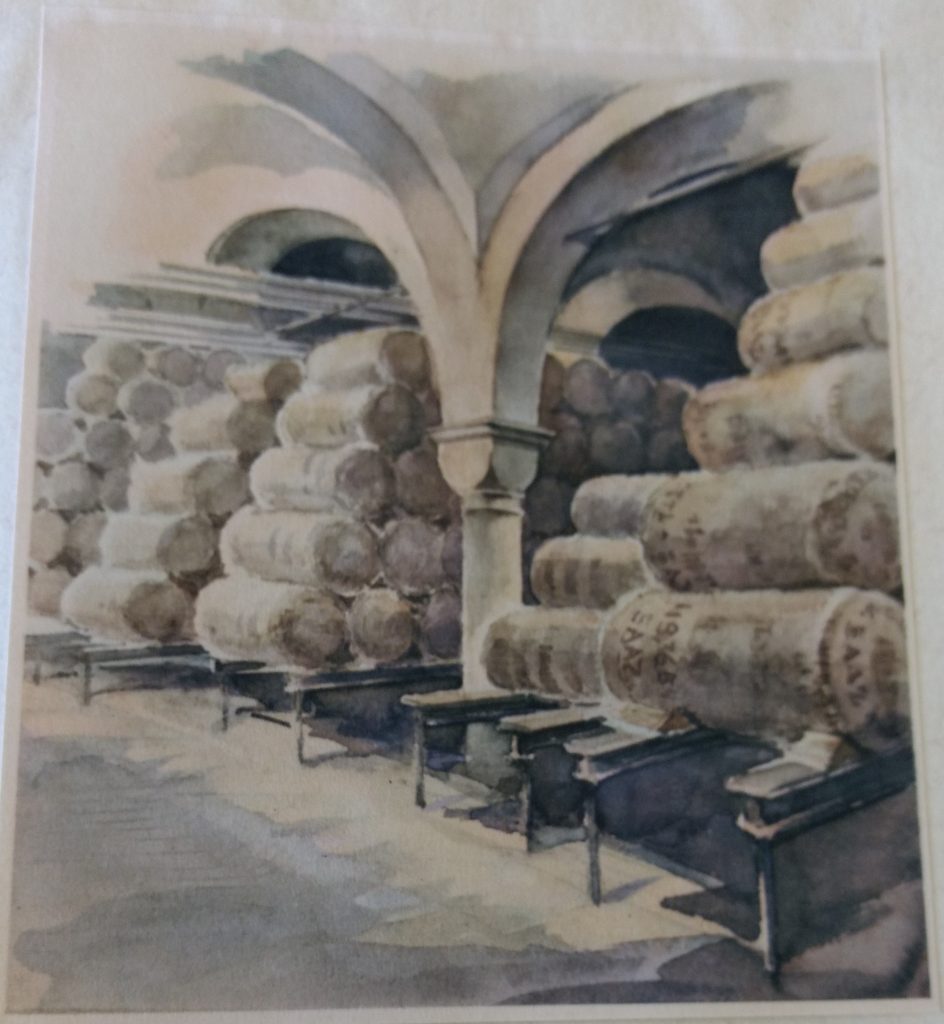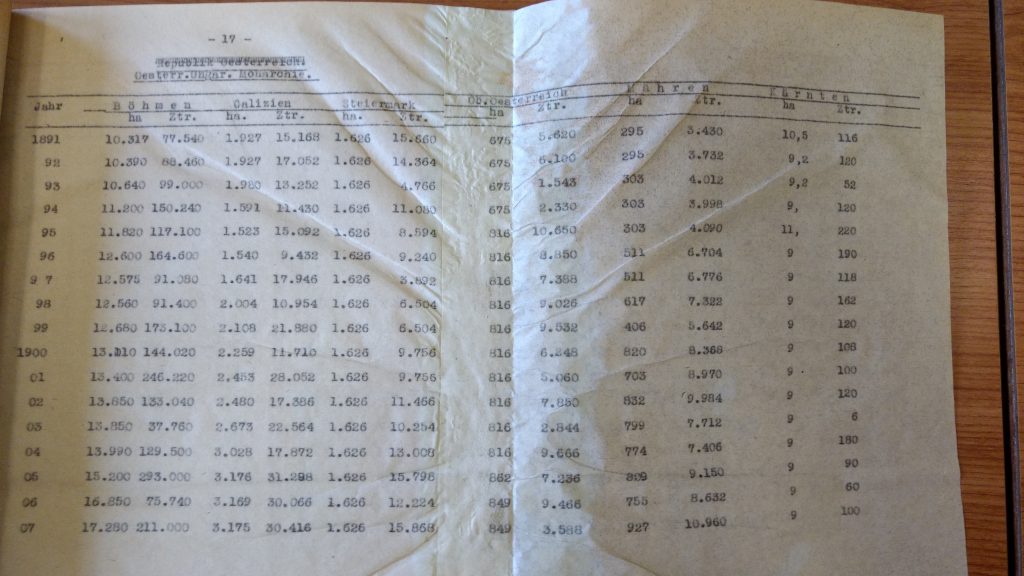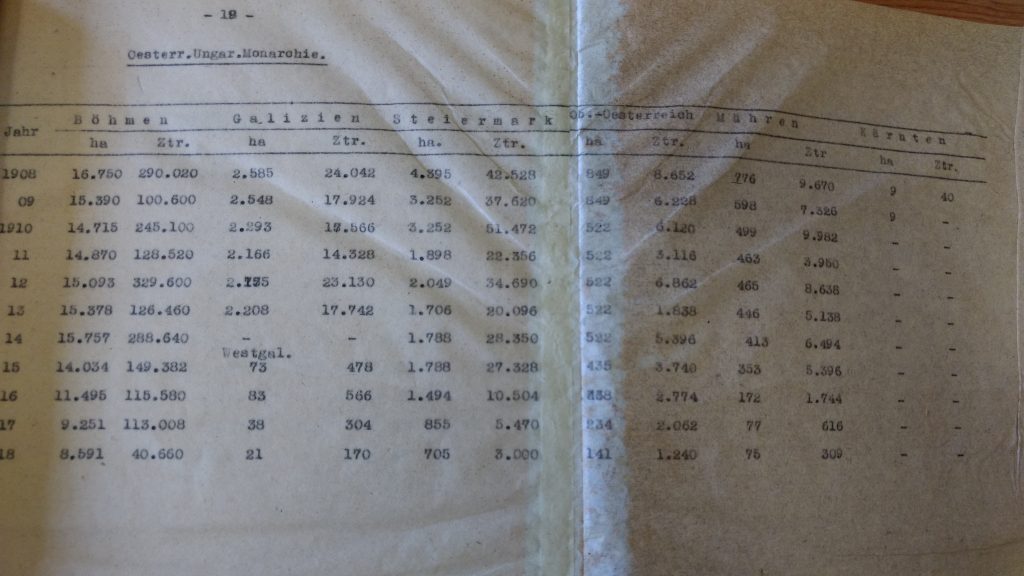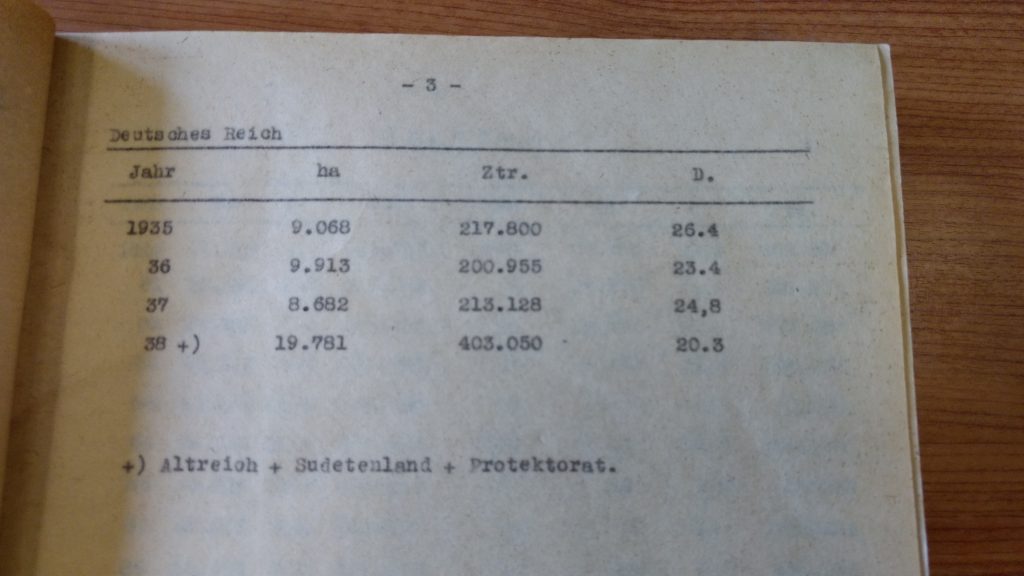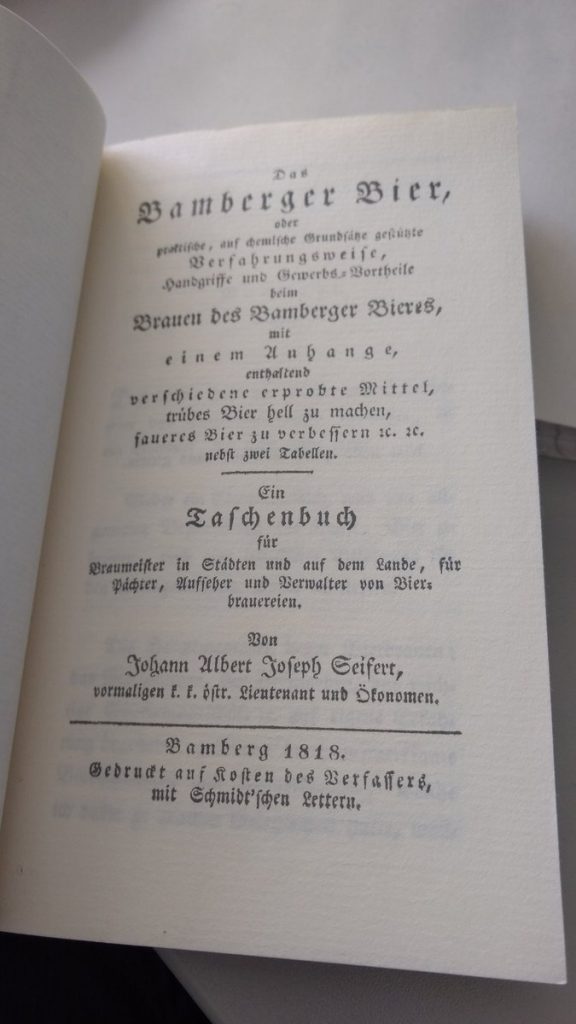Let me tell you a little story about two historic mash processes that I discovered by pure chance, and how neither of them quite worked out. But there’s still stuff we can learn from them.
During some beer-related research, I stumbled upon a brewing book I hadn’t seen before, “Handbuch für den Amerikanischen Brauer und Mälzer” (“manual for the American brewer and maltster”), written by Ernst Hantke and published in 1897. This was odd, I thought, because it specifically referred to American brewing, and yet was published in German. Hantke was born in Silesia, and grew up in Germany. He studied chemistry, and landed a position as assistant of Dr. Delbrück at the “Versuchs- und Lehranstalt für Brauerei”, better known as VLB Berlin. In 1893, he emigrated to the United States, where he first worked as instructor at the American Brewing Company, and later accepted a job at the Valentin Blatz Brewing Company in Milwaukee, Wisconsin.
Milwaukee at that time was the epicenter of German-American brewing, four of the largest American breweries at that time were based there, Miller, Pabst, Schlitz, and Blatz, all of them founded by German immigrants to the US at some point during the 19th century. Among American brewers, Hantke’s book was well-received, his epitaph in “Letters on Brewing” says:
At the brewmasters’ convention in Pittsburgh in 1896, when the first few pages were offered for inspection, the whole assembly of brewmasters welcomed the book so heartilythat Dr. Ernst Hantke was encouraged to renewed activity. In 1897 at the brewmasters’ convention in Detroit, the first volume, comprising 668 pages, was ready for distribution in book form and 2 years later the second volume of 824 pages completed.
So Hantke was in the unique position to both have researched German brewing in scientific detail, but at the same time also witnessed large-scale beer production in the United States at the heart of American lager brewing. He discussed general differences, like the German preference of all-malt decoction mashing and the American preference of using adjuncts (unmalted grains) and infusion mashing. He even brought a specific rationalization for why this difference makes sense: decoction beers are more nutritious, but under the impression of the hot American climate during the summer, and the American habit of eating meat three times a day, it is easy to realize that customers will prefer a refreshing, pleasant-tasting, and fizzy drink to a nutritious one.
Also from a purely technological point he defended infusion mashing: he described American malts to be generally of high quality and usually kilned at low temperatures, so the available diastatic power was enough to reach the same level of extraction and efficiency as a decoction mash, but resulting in a more fermentable wort and a quicker process.
When I went through the book, I was especially excited to see descriptions of two mashing processes, one described as the “Wiener Maischverfahren”, the Viennese mashing process (essentially a 3 decoction mash with two thick and one thin decoction) as done by Schöneberger Schlossbrauerei from Berlin, while the other mash processes is the specific adjunct mashing process as practiced by Pabst. So not only contains this book general process descriptions of how German and American brewers were mashing, it even references the specific breweries that employed the respective techniques.
The descriptions were detailed enough to reconstruct the whole process and convert it to typical homebrewing sizes. The Viennese mashing process was first. The amount of beer produced 140 hectoliters, at an OG of 12° Balling (about the same as 12° Plato, OG 1.048). The amount of malt used was 2500 kg. So, to start scaling the whole recipe down to the typical homebrewer size of 20 liters, let’s see by which factor we need to scale it down. 140 hl / 0.2 hl = 700. Alright, then let’s convert the grist: 2500 kg / 700 = 3.571 kg. Wait… a 12° beer from just 3.571 kg of malt? That won’t work out, especially since the brewhouse efficiency is documented as 65.19 %. Something must have gone wrong there when the author transcribed the recipe or something. Nevermind, on to the second recipe, the Pabst adjunct mashing process.
In this process, 300 barrels of beer were produced from 10000 pounds of malt and 6000 pounds of grits. The grits are mashed in, boiled for 15 minutes, and then added to the main (malt) mash to raise the temperature to saccharification temperature. While we don’t know the exact OG of the wort that Pabst produced, another, very similar process mentioned in the paragraph right after the Pabst process, we can assume an OG of around 13.1° Balling (about the same in Plato, 1.053).
So, again for scaling: 300 barrels are 300 bbl * 117 l = 35100 liter. To scale down to 20 liters, we therefore need to divide by 35100 / 20 = 1755. 10000 pounds are 4536 kg, while 6000 pounds are 2721 kg, which means the grist consisted of 4536 kg / 1755 = 2.58 kg malt and 2721 kg / 1755 = 1.55 kg grits, in total a grist of 4.13 kg. To produce a 13° wort from just that amount of malt, you’d need to reach a high amount of extraction, especially so for home brewers, which I don’t think would be that easily doable with just an infusion mash. While slightly more believable than the numbers of the previous recipe, I’m still not quite sure whether this is 100 % correct or whether the author made a mistake of some sorts. Or maybe I made a mistake? I assumed 1 beer barrel to contain 31 gallons as is standard in the US (normally, 1 bbl contains 36 gallons), and I converted using US gallons (3.78541 liter), so my calculations should be sound.
Despite all these inconsistencies, we still learn valuable details: the grist of a late 19th century American lager as brewed by Pabst consisted of 62.5 % malt, 37.5 % corn grits, was mashed using an infusion mash with a separate adjunct mash/boil to gelatinize the grits, and the wort produced, if we can assume that most breweries at the time produced beer of about the same strength, was probably at an original gravity of about 13 °Balling (1.053). That’s a good start to formulate a recipe at least inspired by a lager of that era.
The mash process is also quite specific: dough in the grits into a liquor of 50 °C, the resulting mash should then have a temperature of 47.5 °C. Rest for 30 minutes, then heat up to 67.5 °C, rest for 20 minutes, then heat up to 75 °C over the course of 15 minutes. Then bring to a boil, and boil the adjunct mash for about 15 minutes. In the meanwhile, the malt is doughed in at a temperature of 45 to 47.5 °C. The adjunct mash is then added in two steps with 5 to 10 minutes inbetween, to raise the main mash temperature to 70 °C. From there on, the mash needs to convert the starches to sugar. When the mash is fully converted, the mash temperature is raised to 72.5 °C by adding more hot liquor, which concludes the mash. The first runnings of this mash should have an OG of 19° Balling (about 1.079). While not a complete recipe, with some additional calculation a homebrewer could work with that.
Compared to the adjunct infusion mash, the Viennese mash is more intricate: the 2500 kg of malt are doughed in so that the resulting mash is 92 hectoliters at a temperature of 17.5 °C. Then, 32 hectoliters of boiling water are slowly mixed in to bring the overall temperature of the mash to 37.5 °C. The first thick decoction of 30 hectoliters is then drawn and boiled for 30 minutes down to 26 hectoliters, then mixed back to the main mash to raise the temperature to 50 °C.
The next thick decoction, 40 hectoliters, is then drawn off, and boiled for 35 minutes down to 36 hectoliters. After mixing it back, the temperature of the main mash is at 61.25 °C. Then, the final decoction, 53 hectoliters of thin mash, are drawn off, and boiled for 35 minutes down to 49 hectoliters. After mixing it back, the main mash should be at a temperature of 75 °C, and the size of the mash in the mash tun should be 112 hectoliters. The whole process takes 4.75 hours.
After lautering and sparging, 152 hectoliters of wort are collected, which is boiled for 2.5 hours to get 140 hectoliters of wort at an OG of 12° Balling. The total work time for a single batch is described as 12.25 hours, surely a long brew day in Schöneberg, while Hantke mentions that brewing using the infusion method takes 5 to 7 hours, and not only saves time, but also lots of fuel that is otherwise required to boil the various decoctions.
So, what can we learn from this? First of all, always scrutinize historic recipes if it’s possible to check them for consistency (in this particular instance, we knew amounts of beer, grist, and OG). Second, we can still get a whole lot of information out of such historic records. We learned about the strength of American lager beer at the end of the 19th century, we learned about the grist composition in one particular instance, i.e. how Pabst used to brew their beer, and we even learned the specific method how Pabst used to conduct their mashes.
In my opinion, that is a whole lot to start developing a lager recipe: 13 °P, a ratio of malt and grits of 62.5/37.5, and mashed according to the infusion method described above. Hantke lists using about 1 pound of hops per barrel of beer for beers at 13° Balling. That’s a hopping rate of about 3.9 g per liter, which I find a bit too high, especially when using a classic American hop variety, such as Cluster. But then, with Cluster you should be able to achieve a bitterness and hop character that probably comes quite close to what American lager beer over a 100 years ago must have tasted like.
If you want to learn more about German-American brewing in the late 19th century (provided you can read German), here’s a link to the “Handbuch für den Amerikanischen Brauer und Mälzer“. For even more insight about 50 years later, there’s also the (English-language) “The Practical Brewer“, authored and edited in 1946 by the master brewers of Griesedick Bros. Brewery and Anheuser-Busch Brewery, both of St. Louis, Missouri. Even there, the great influence of Germans on American lager brewing is very noticeable, in particular in vocabulary.

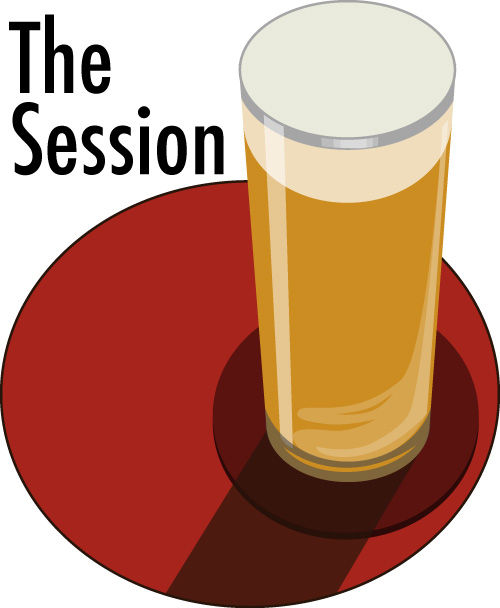
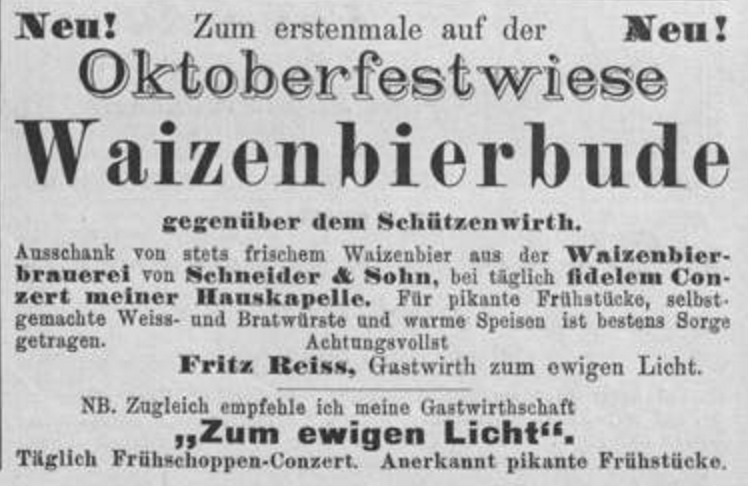
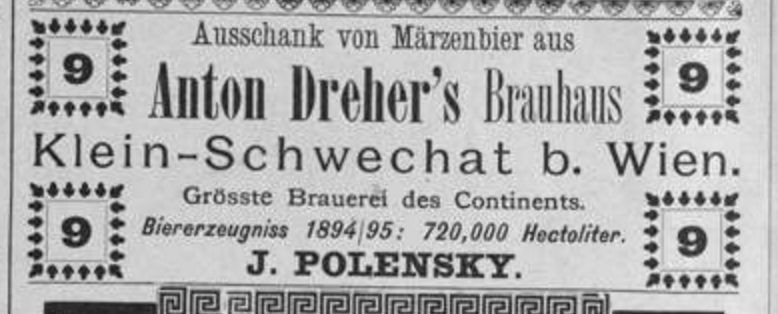
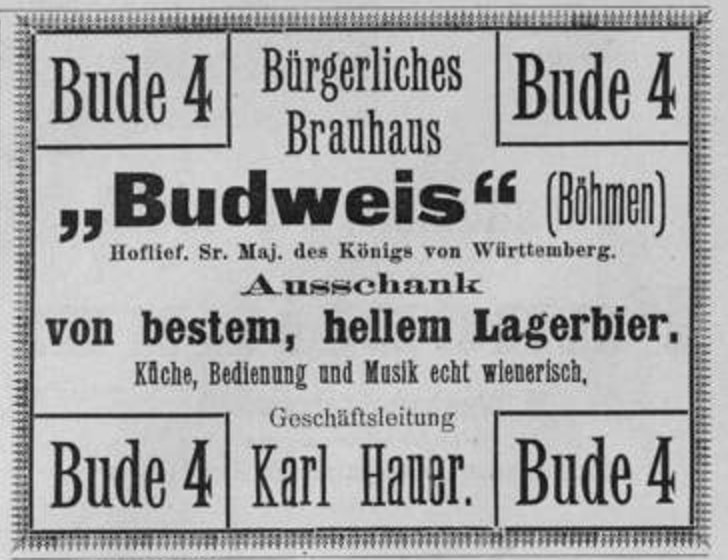
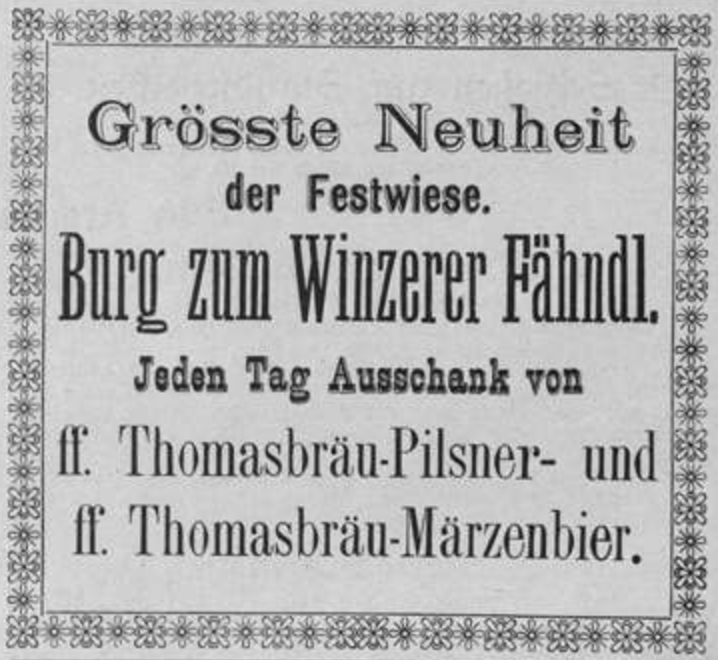
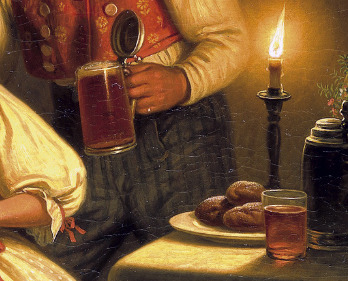 This first example is from a painting depicting a Bavarian pub scene in 1855. One man holds a glass of reddish-brown beer with an off-white head. It’s not clear whether the glass on the table also contains beer, but if it is, looks slightly paler due to the smaller size of the glass.
This first example is from a painting depicting a Bavarian pub scene in 1855. One man holds a glass of reddish-brown beer with an off-white head. It’s not clear whether the glass on the table also contains beer, but if it is, looks slightly paler due to the smaller size of the glass.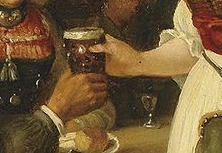 This example shows a Stammtisch scene from 1872 with the waitress handing the customer a glass of dark brown, almost black beer, with a distinctly white head.
This example shows a Stammtisch scene from 1872 with the waitress handing the customer a glass of dark brown, almost black beer, with a distinctly white head.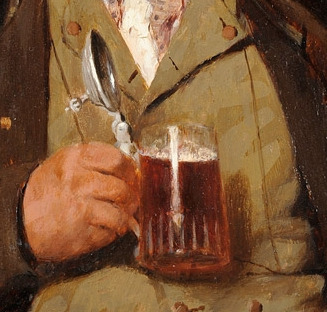 This picture from 1877 again shows a bright, reddish-brown beer, almost bordering on a dark amber.
This picture from 1877 again shows a bright, reddish-brown beer, almost bordering on a dark amber.
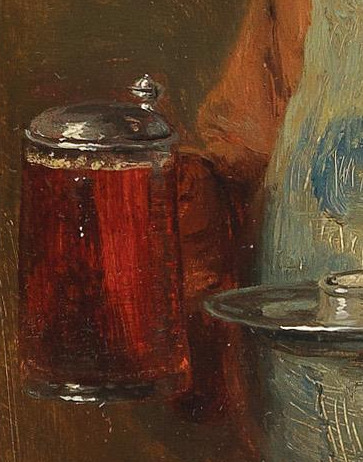
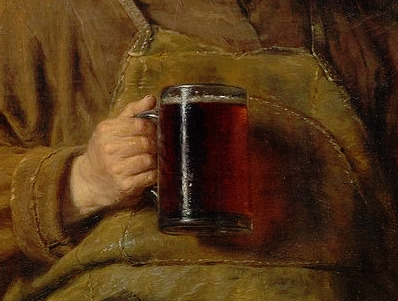 …and the same goes for these examples from 1885, 1888 and 1912. Noticeable in all three is a kind of glow, coming from a bright beer served in glassware, which, in my opinion looks mouthwatering. I would happily want to try one of these beers!
…and the same goes for these examples from 1885, 1888 and 1912. Noticeable in all three is a kind of glow, coming from a bright beer served in glassware, which, in my opinion looks mouthwatering. I would happily want to try one of these beers!
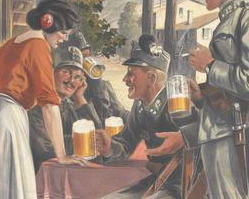 The last two examples are slightly different: both from 1916, they show Austrian-Hungarian soldiers being served beer. The beer has an amber to golden colour, and is distinctly paler than in the other pictures that I showed here. Both are from brewery ads (the top one from the Hungarian Dreher brewery, the bottom one from Hütteldorfer brewery, Vienna), and mostly reflect the ongoing change in beer fashion at that time, while the previous examples are mostly from pictures painted by artists situated in Bavaria, where brown beer remained fashionable for longer than in most other places.
The last two examples are slightly different: both from 1916, they show Austrian-Hungarian soldiers being served beer. The beer has an amber to golden colour, and is distinctly paler than in the other pictures that I showed here. Both are from brewery ads (the top one from the Hungarian Dreher brewery, the bottom one from Hütteldorfer brewery, Vienna), and mostly reflect the ongoing change in beer fashion at that time, while the previous examples are mostly from pictures painted by artists situated in Bavaria, where brown beer remained fashionable for longer than in most other places.